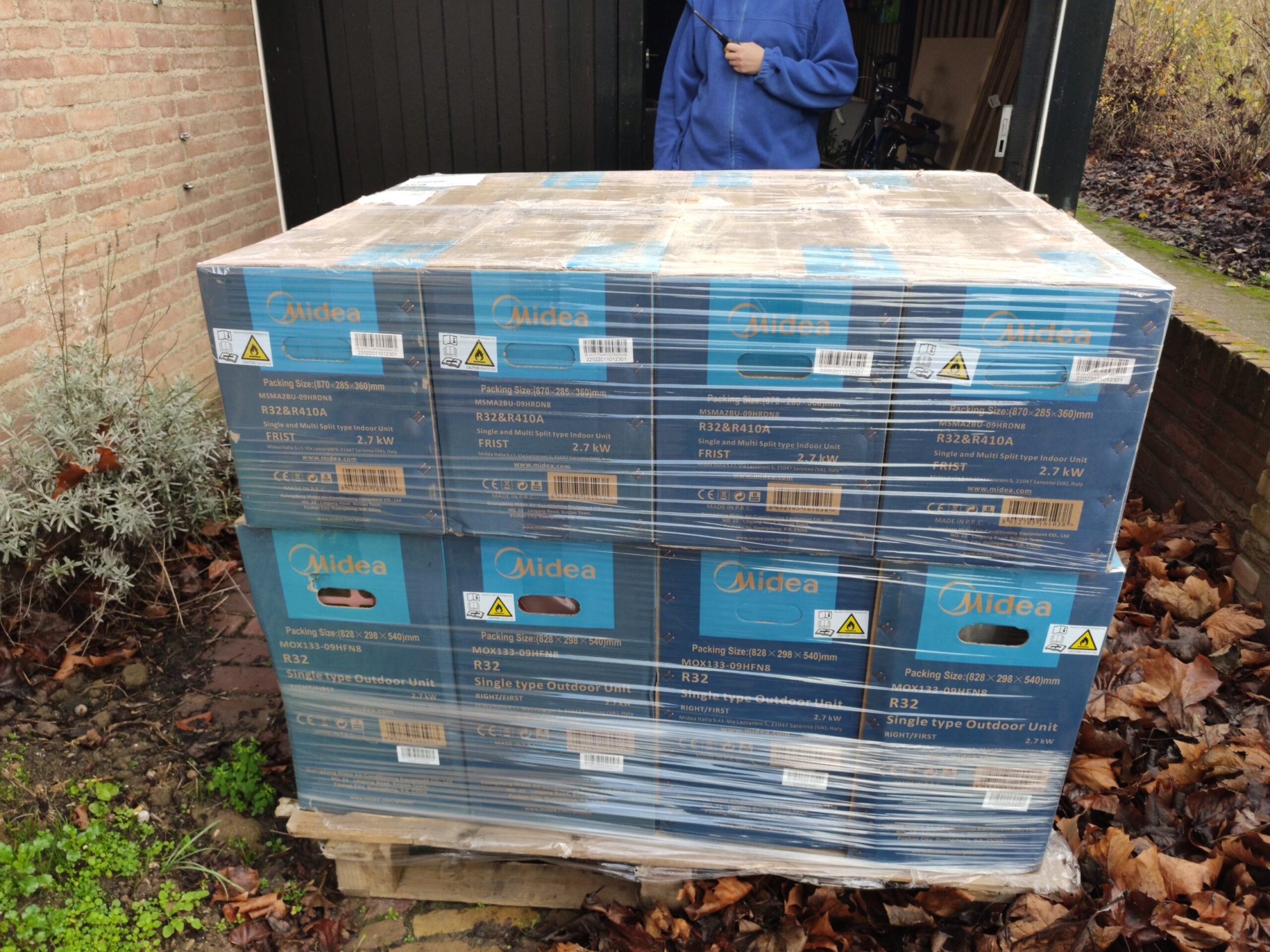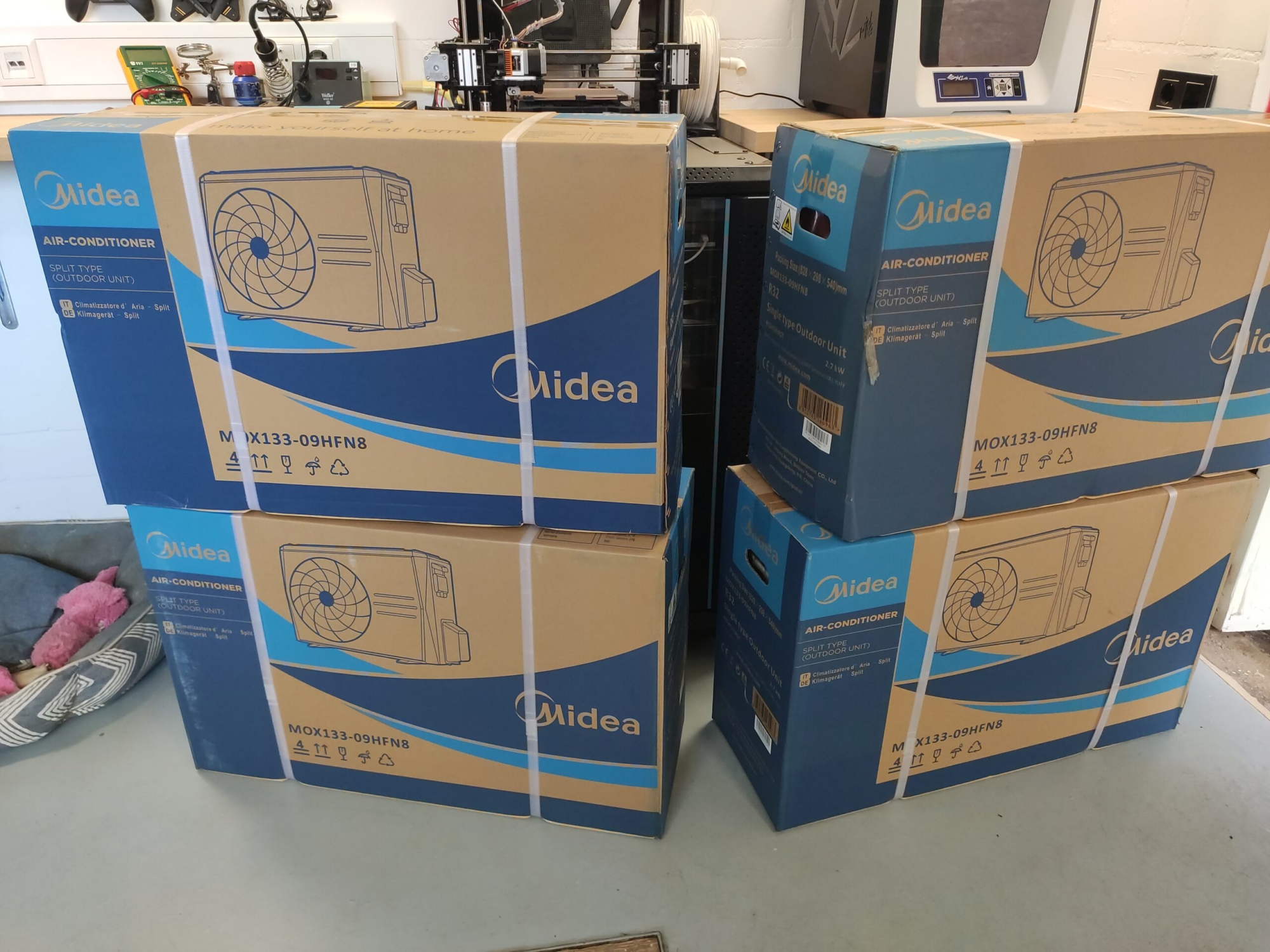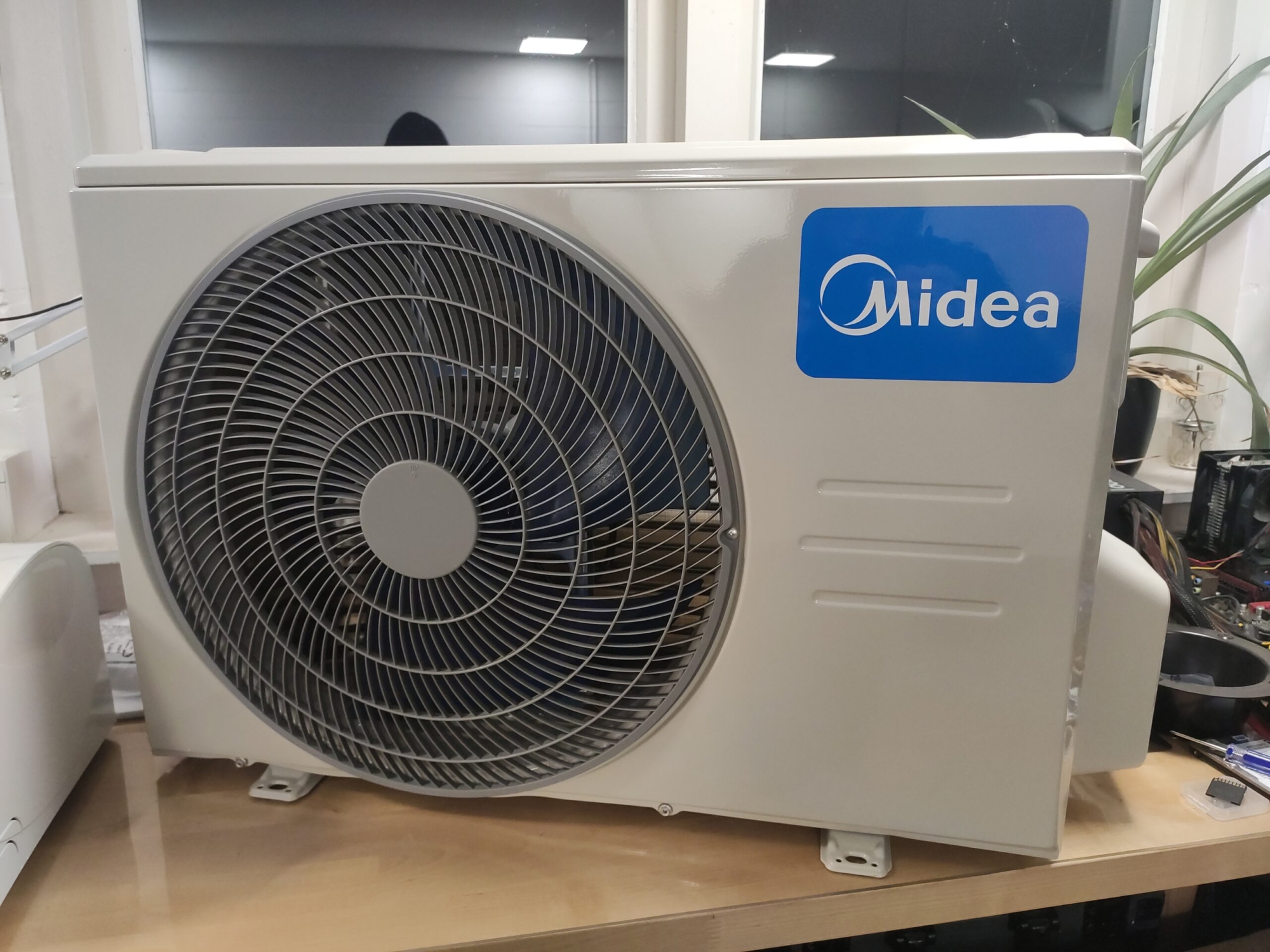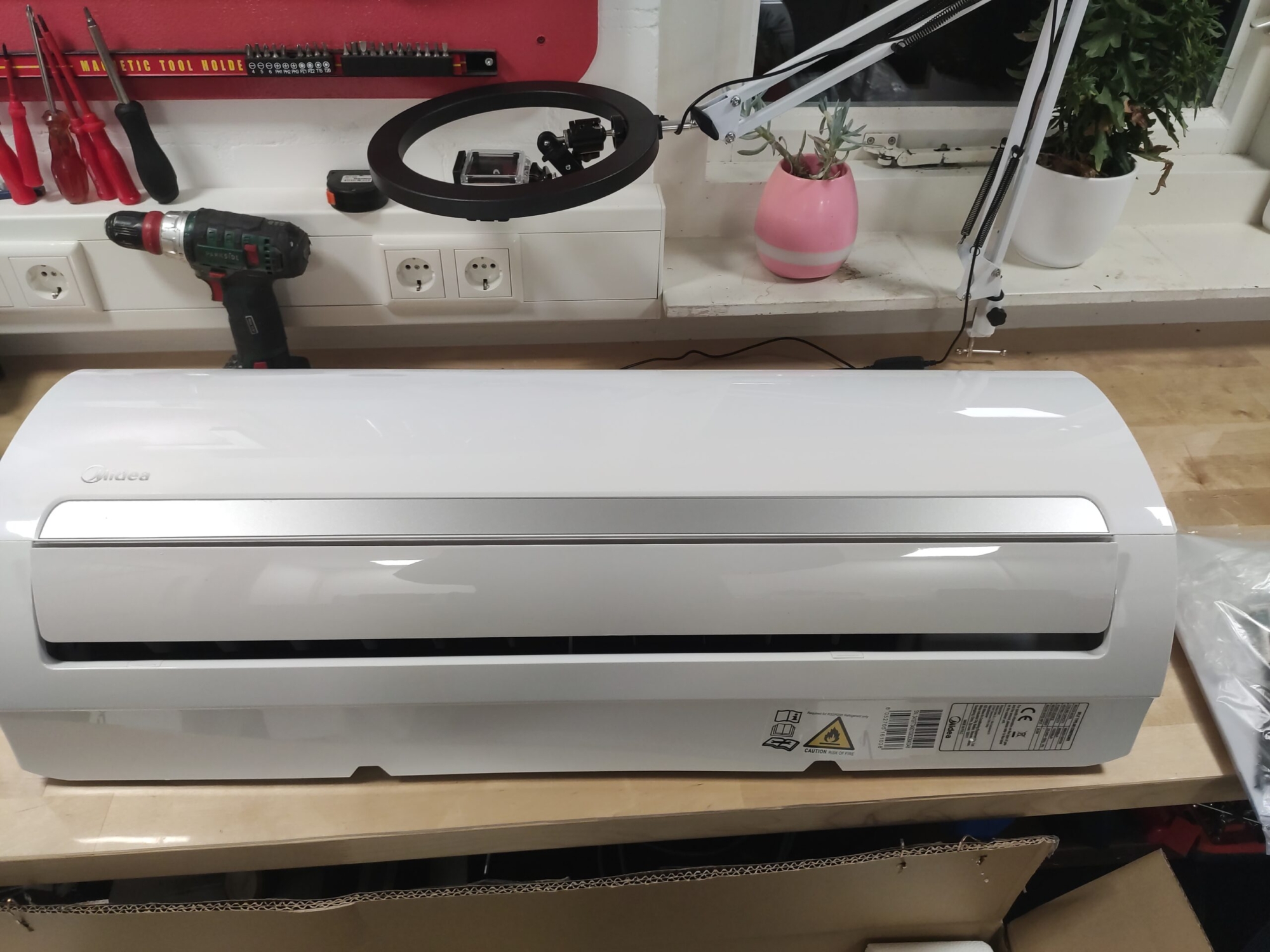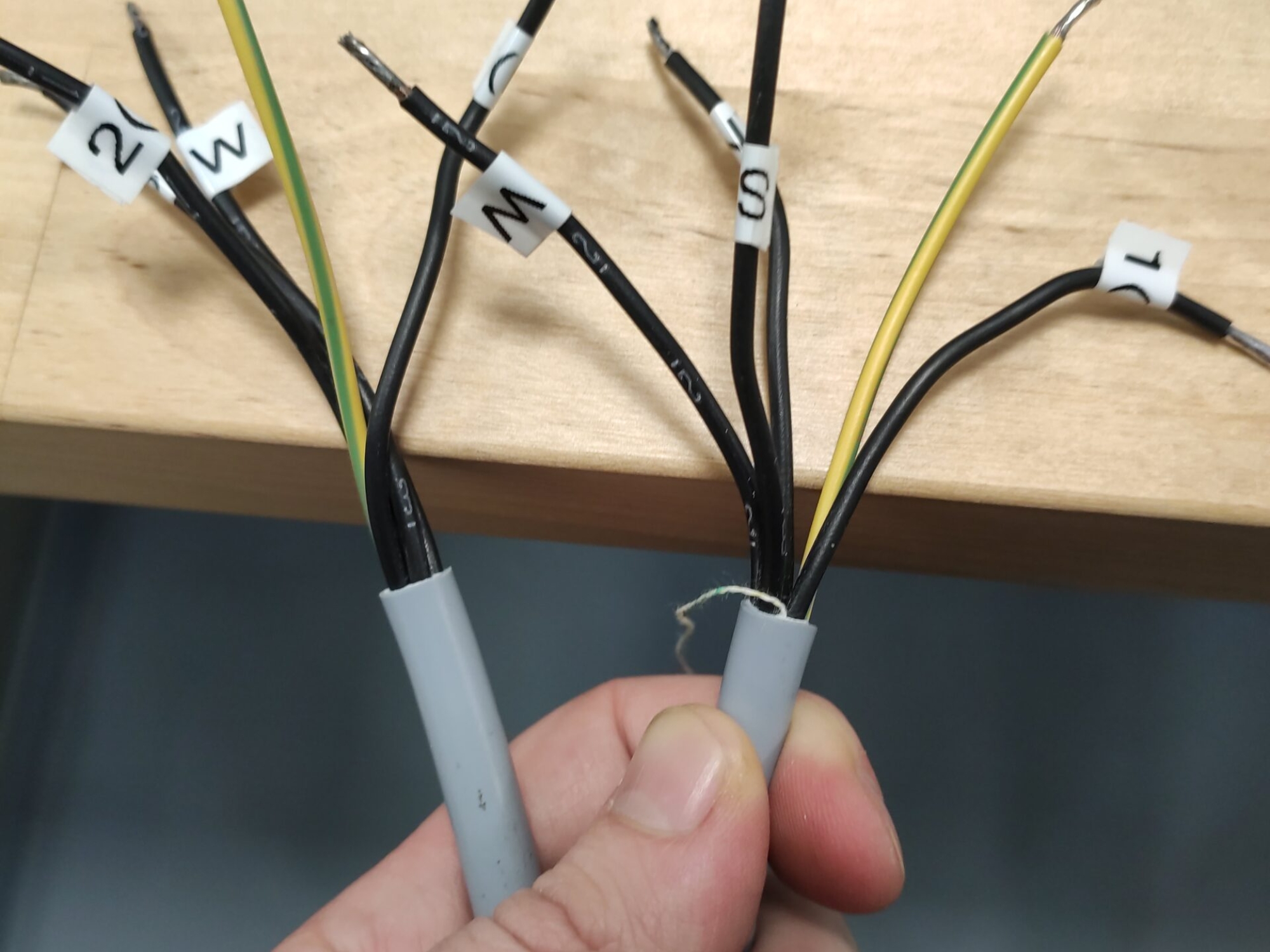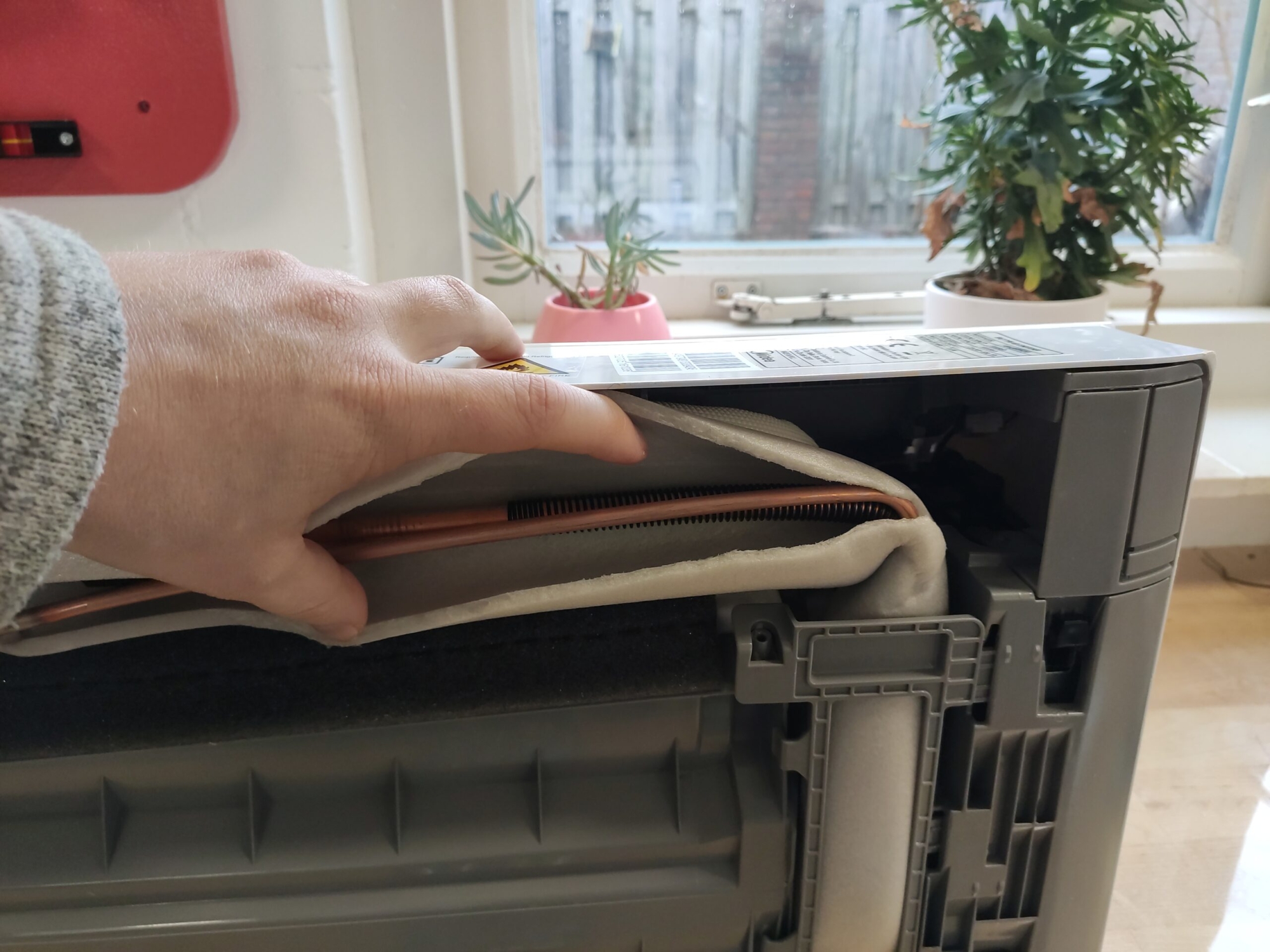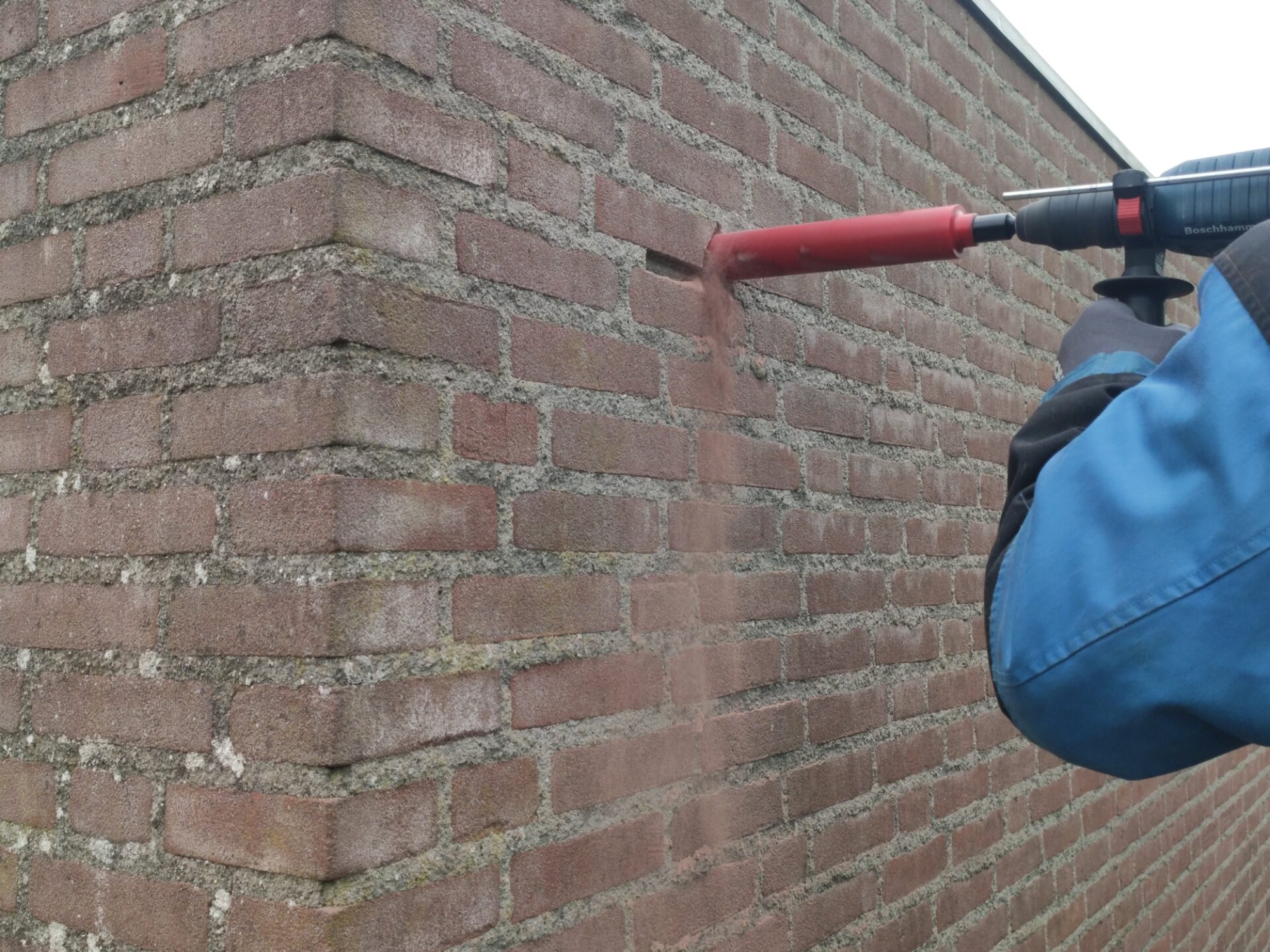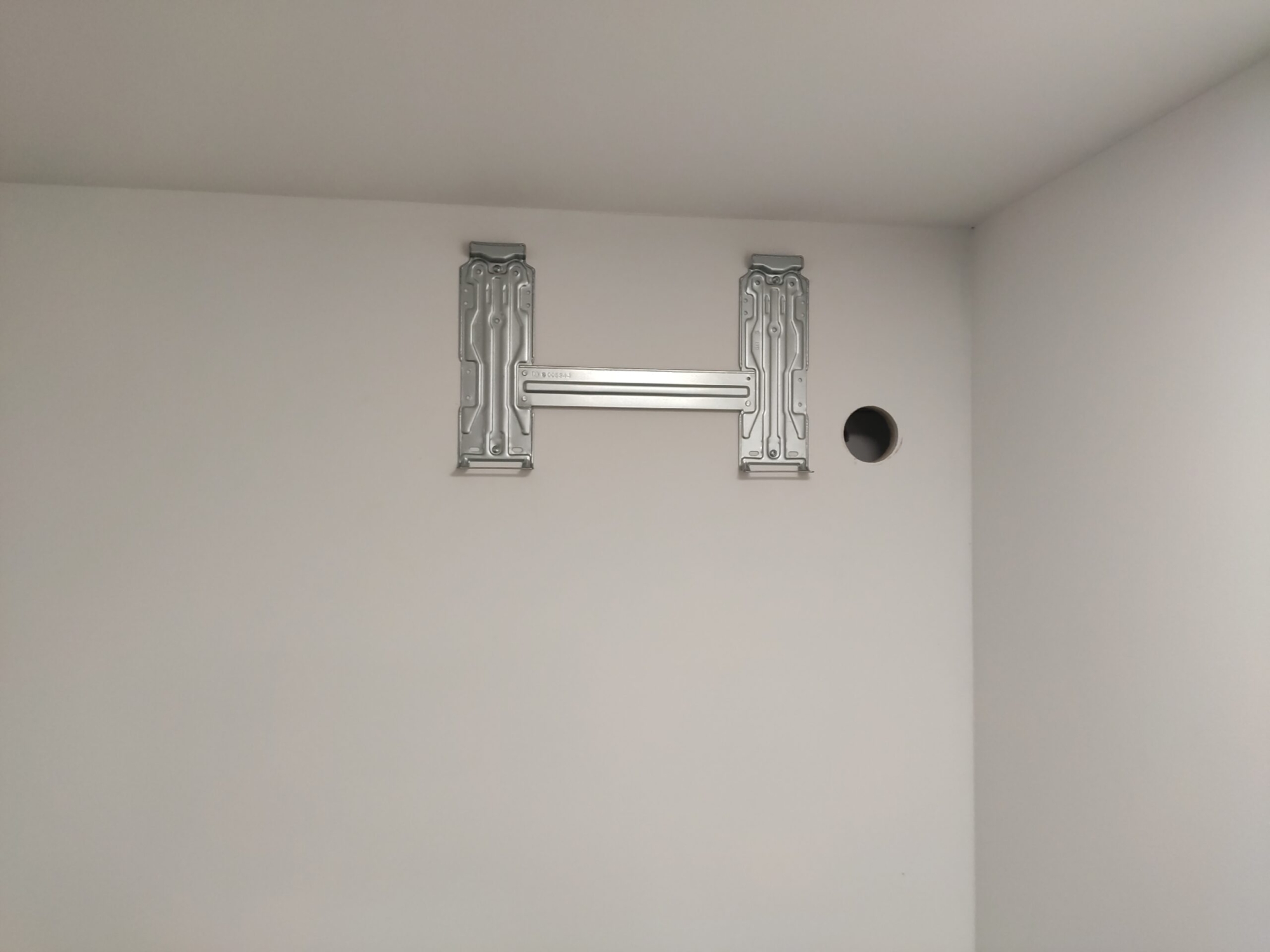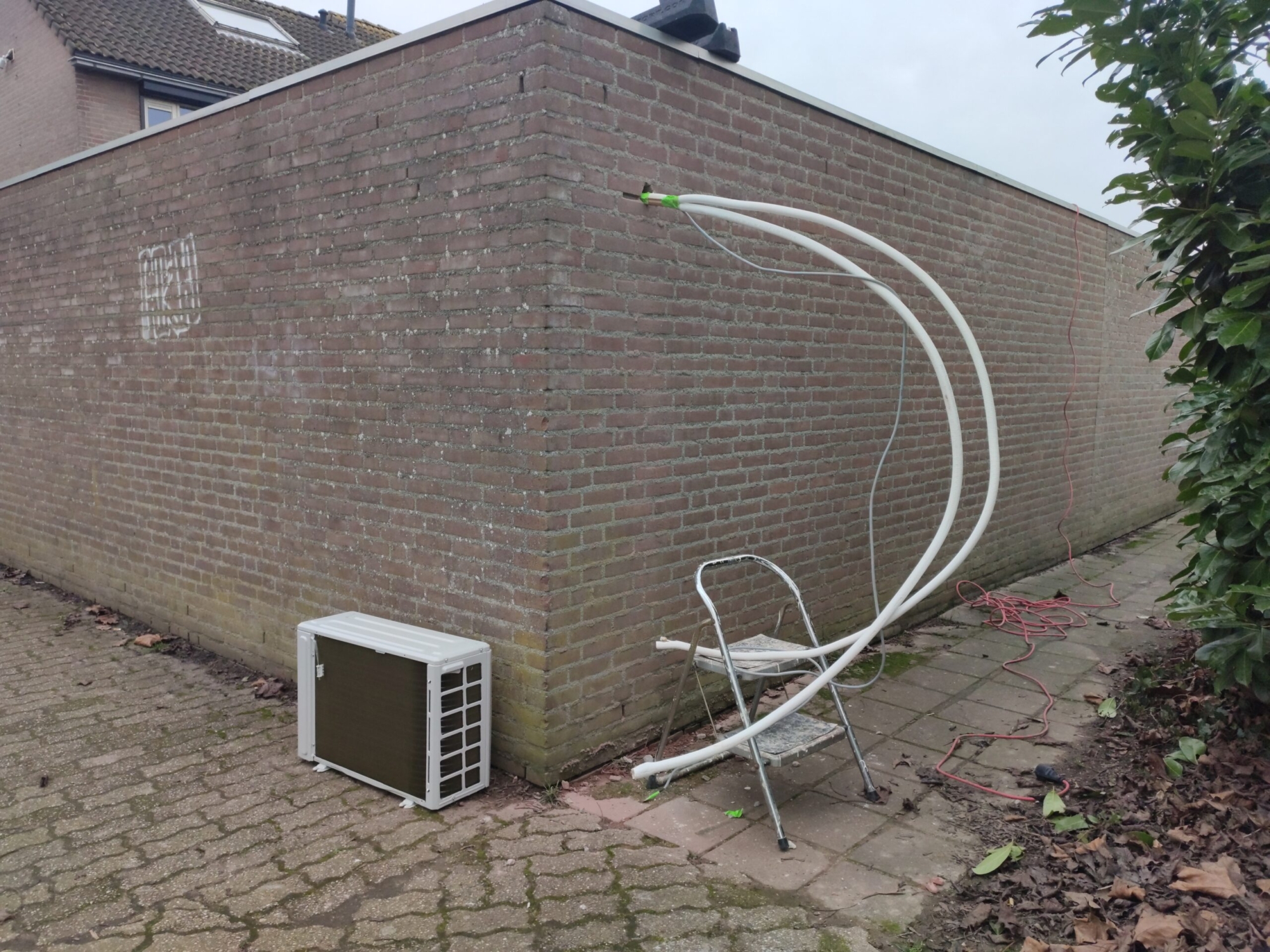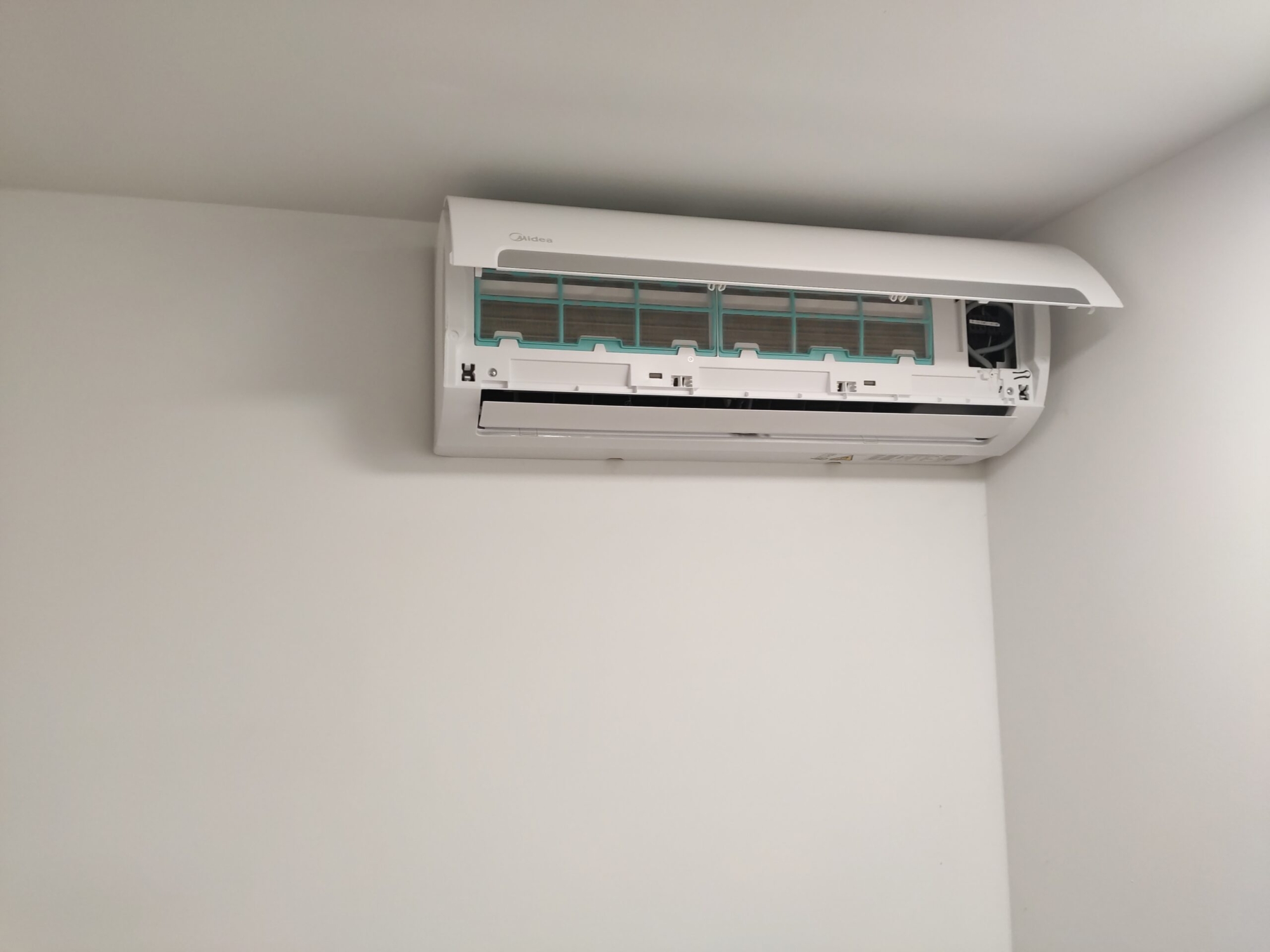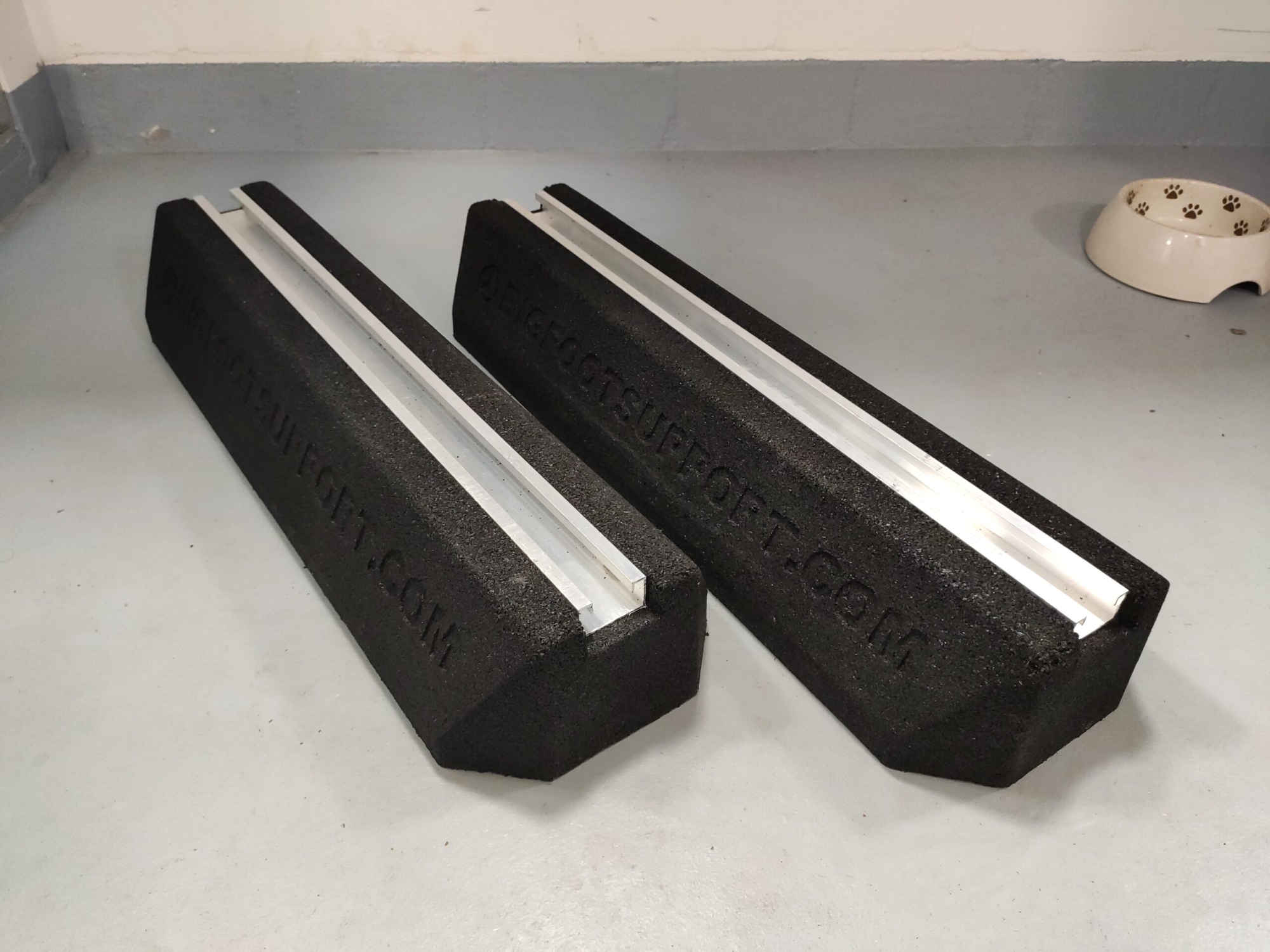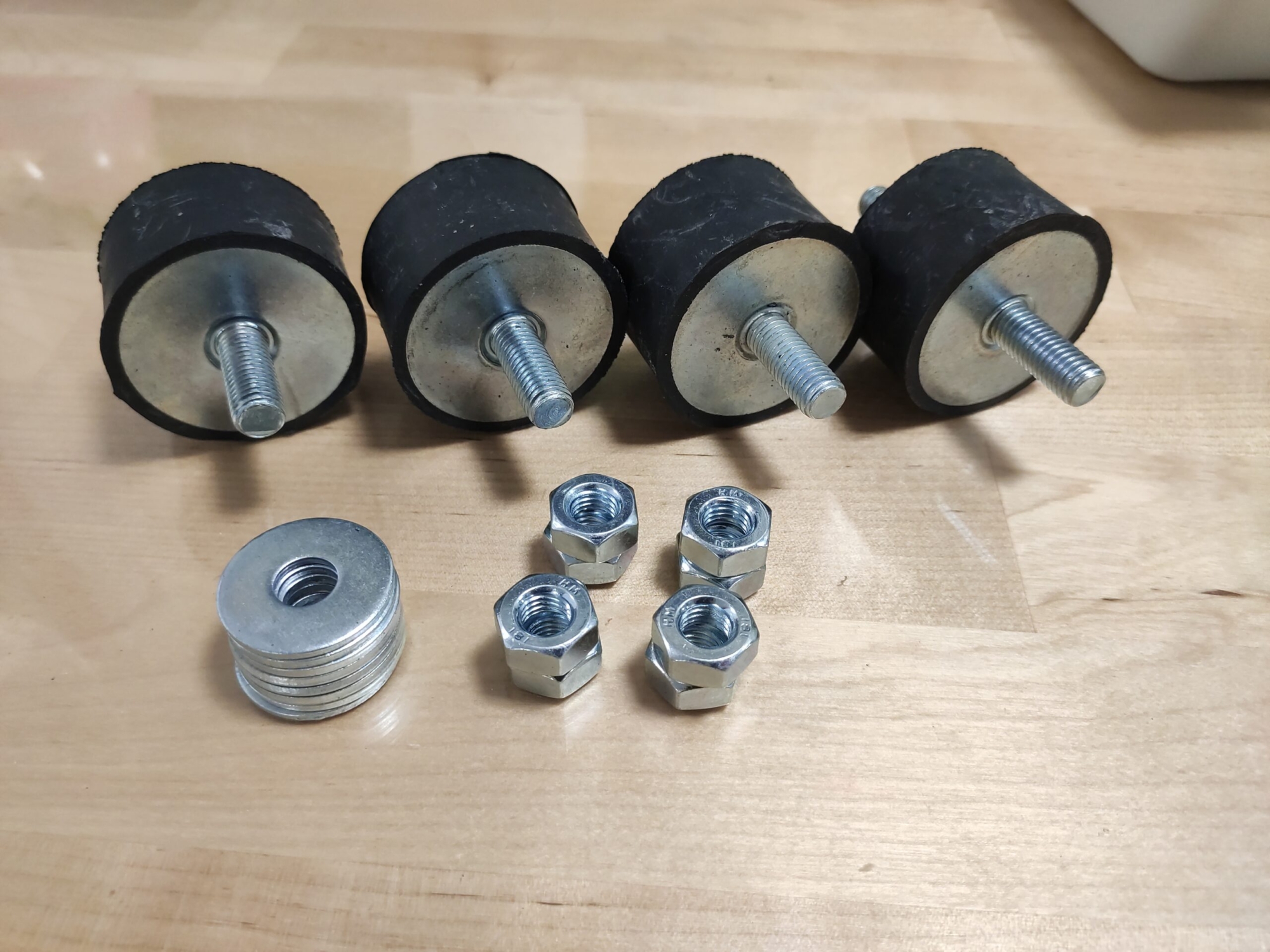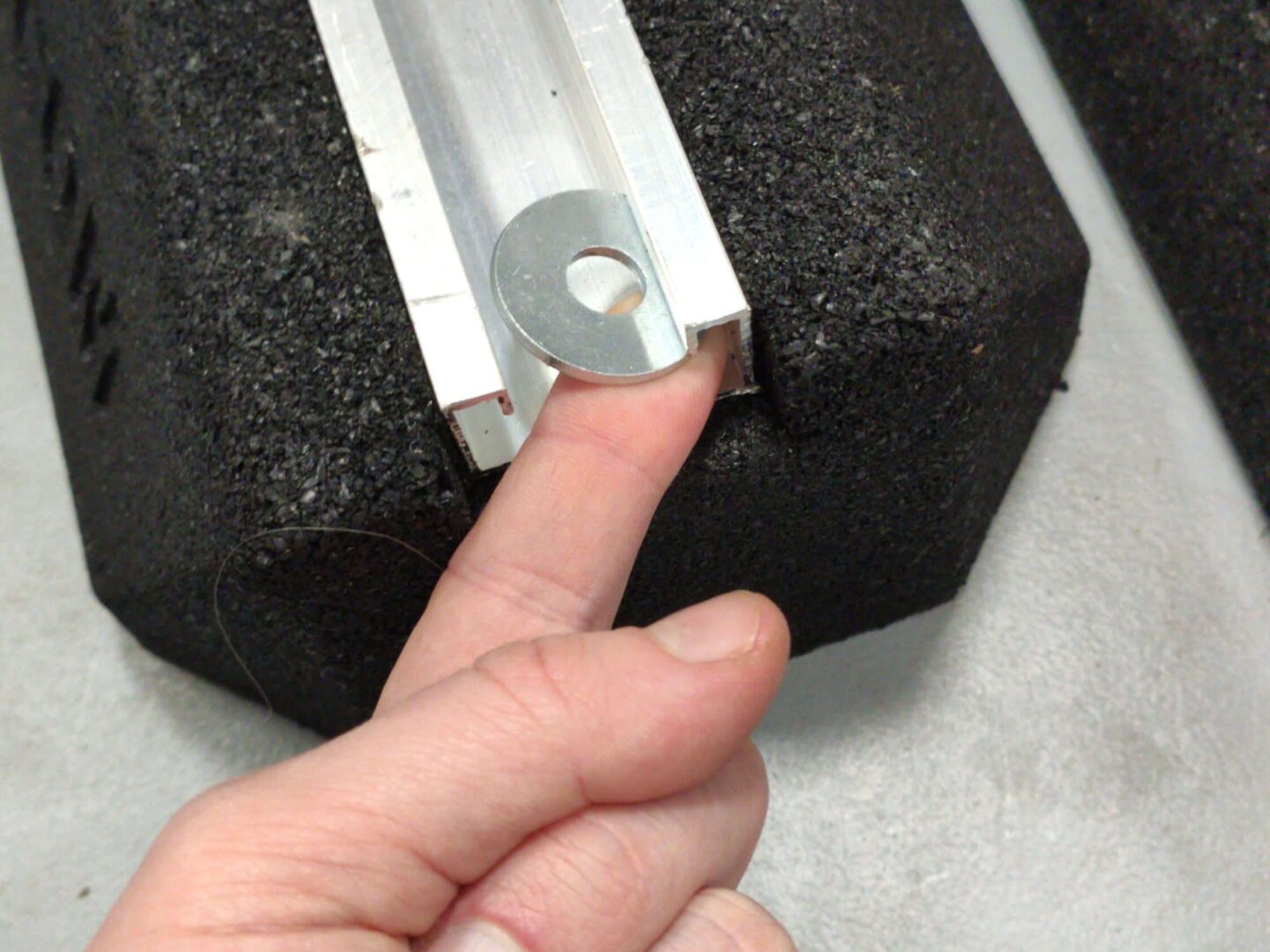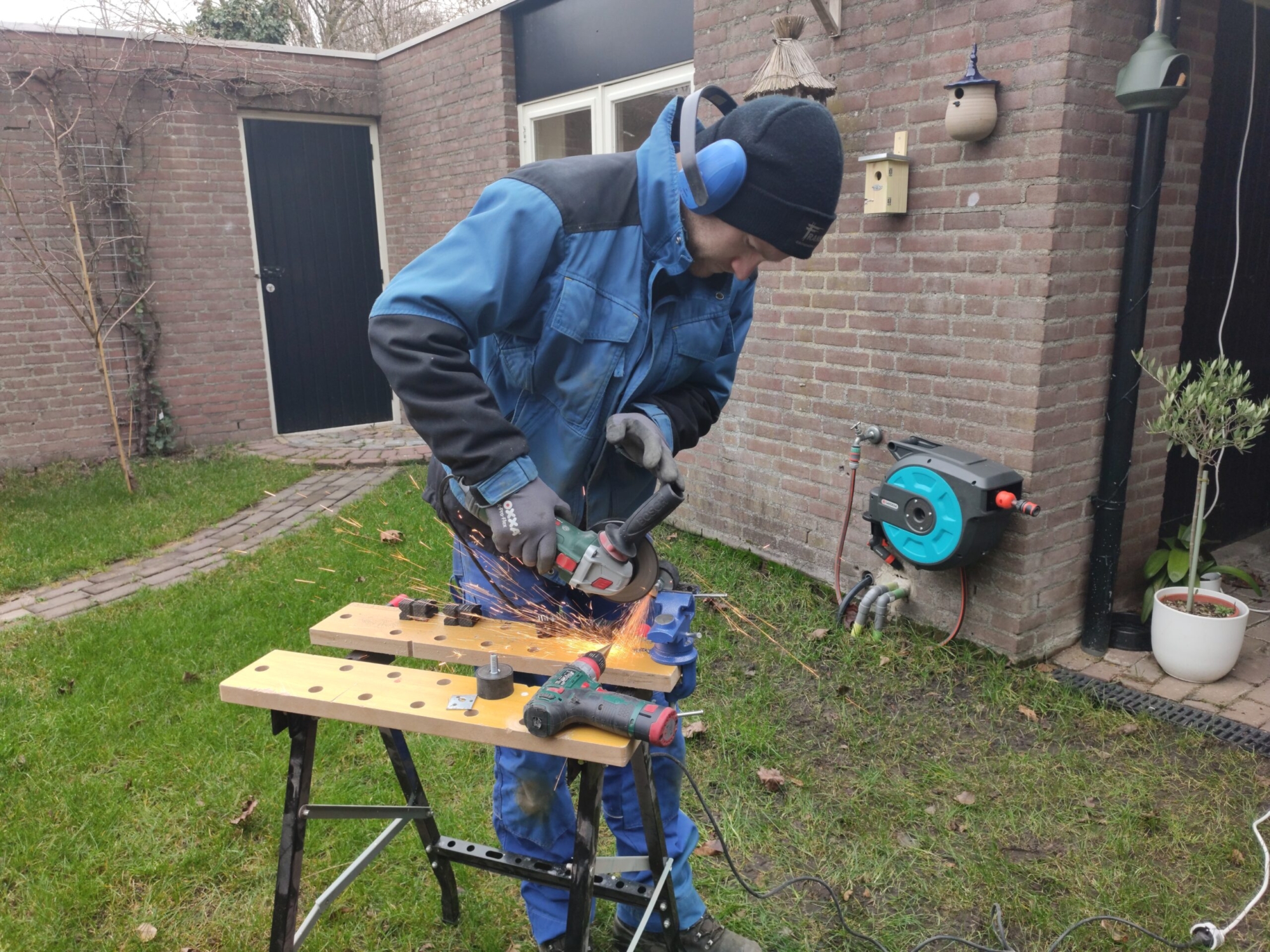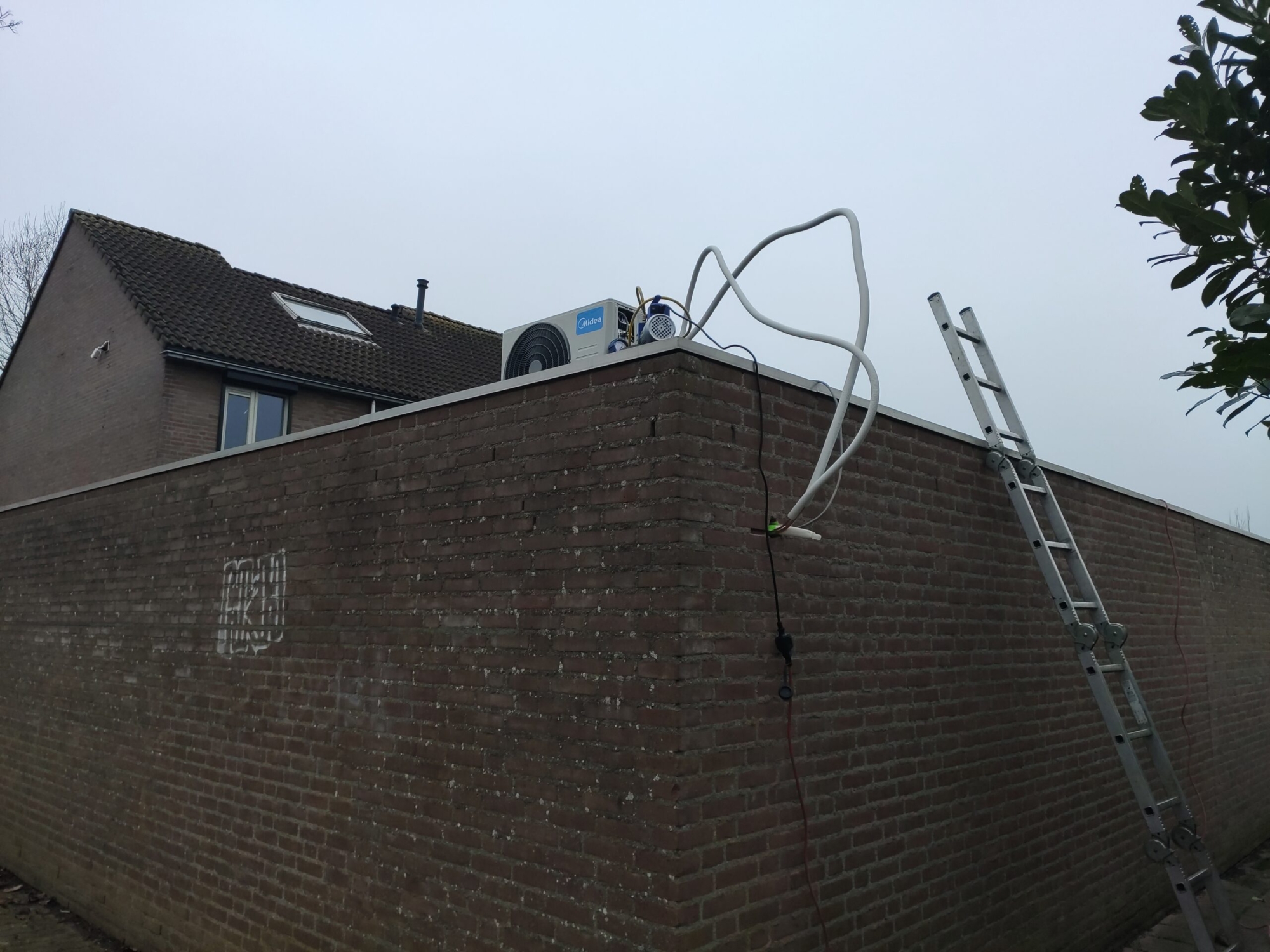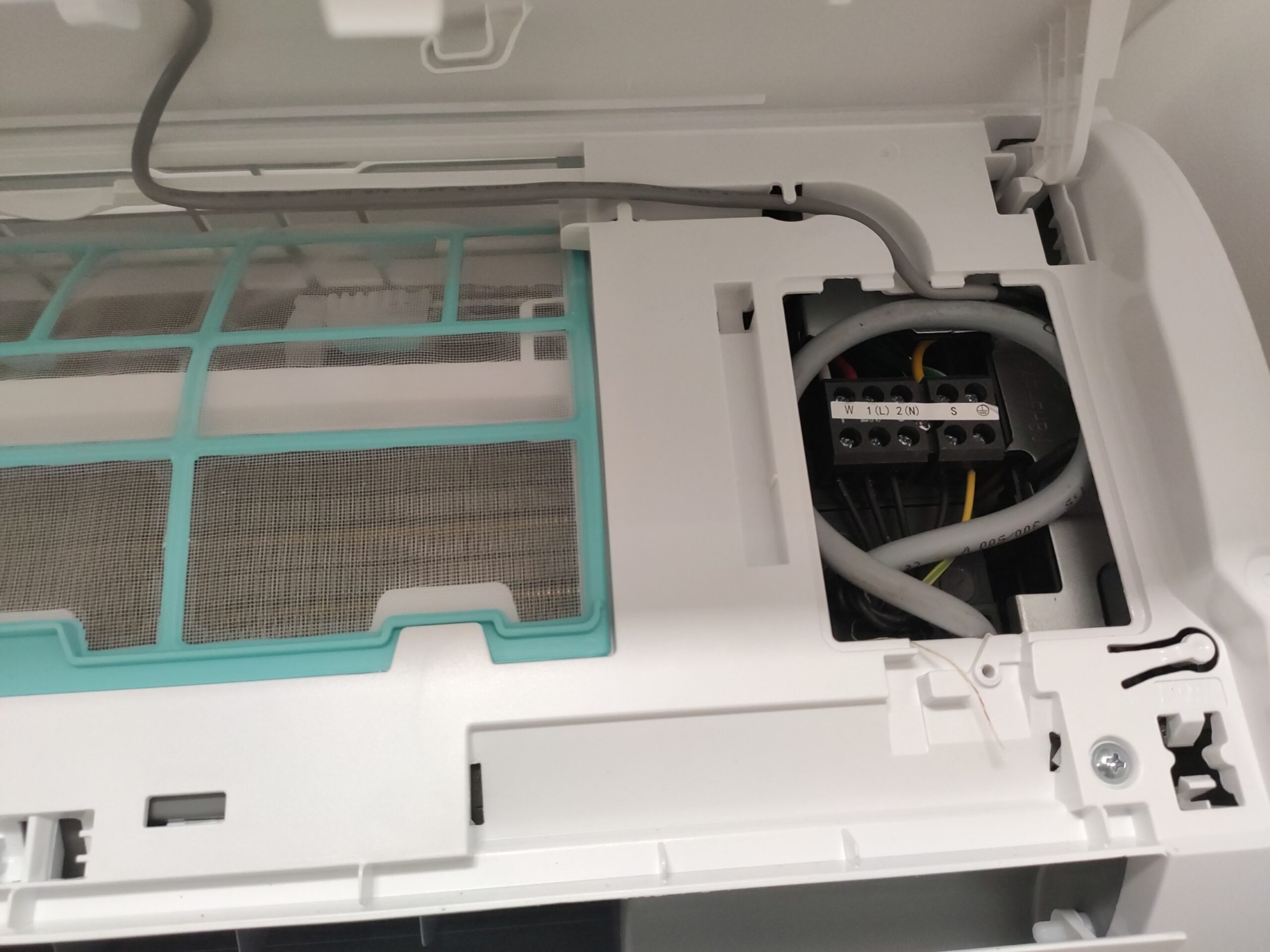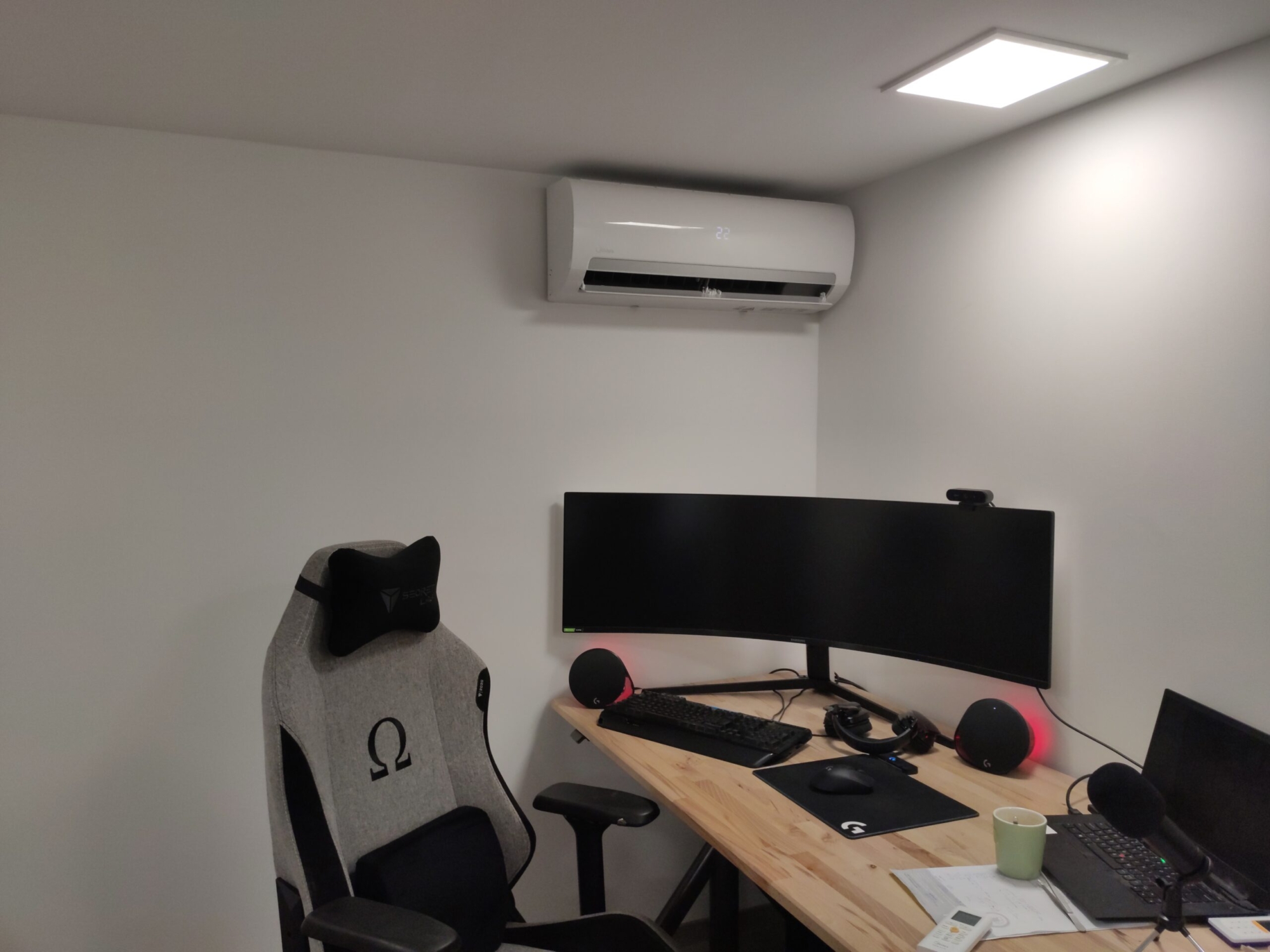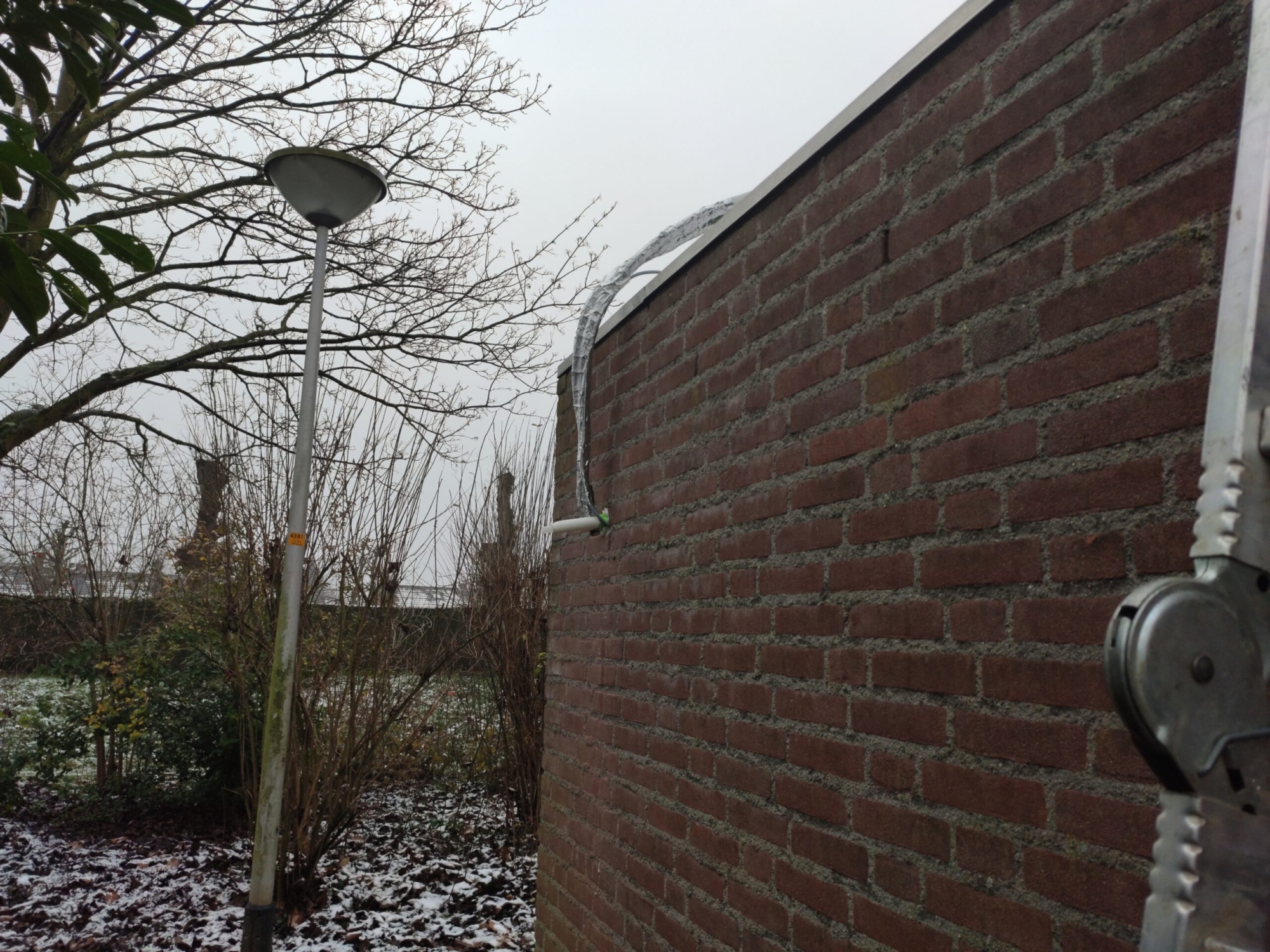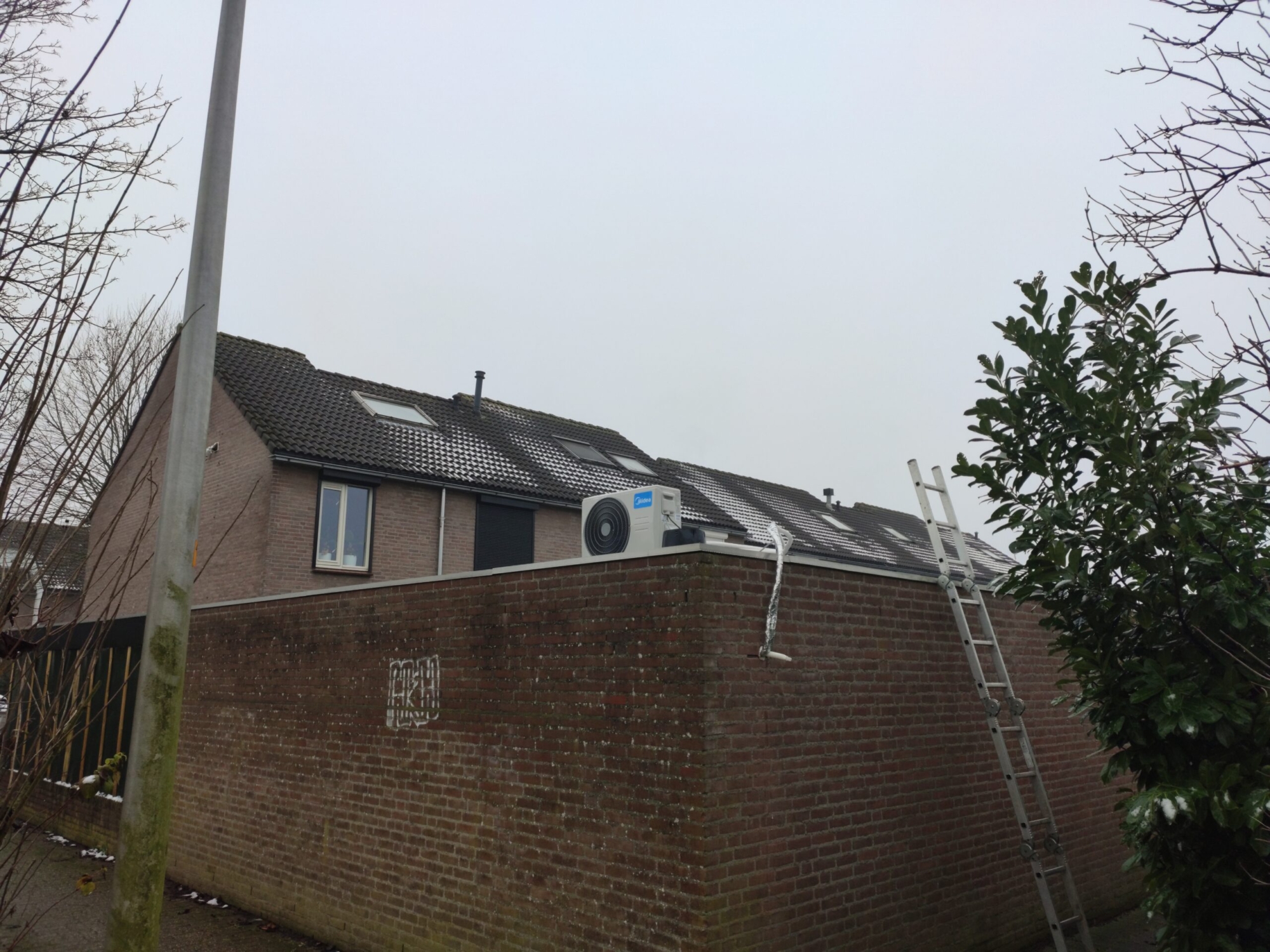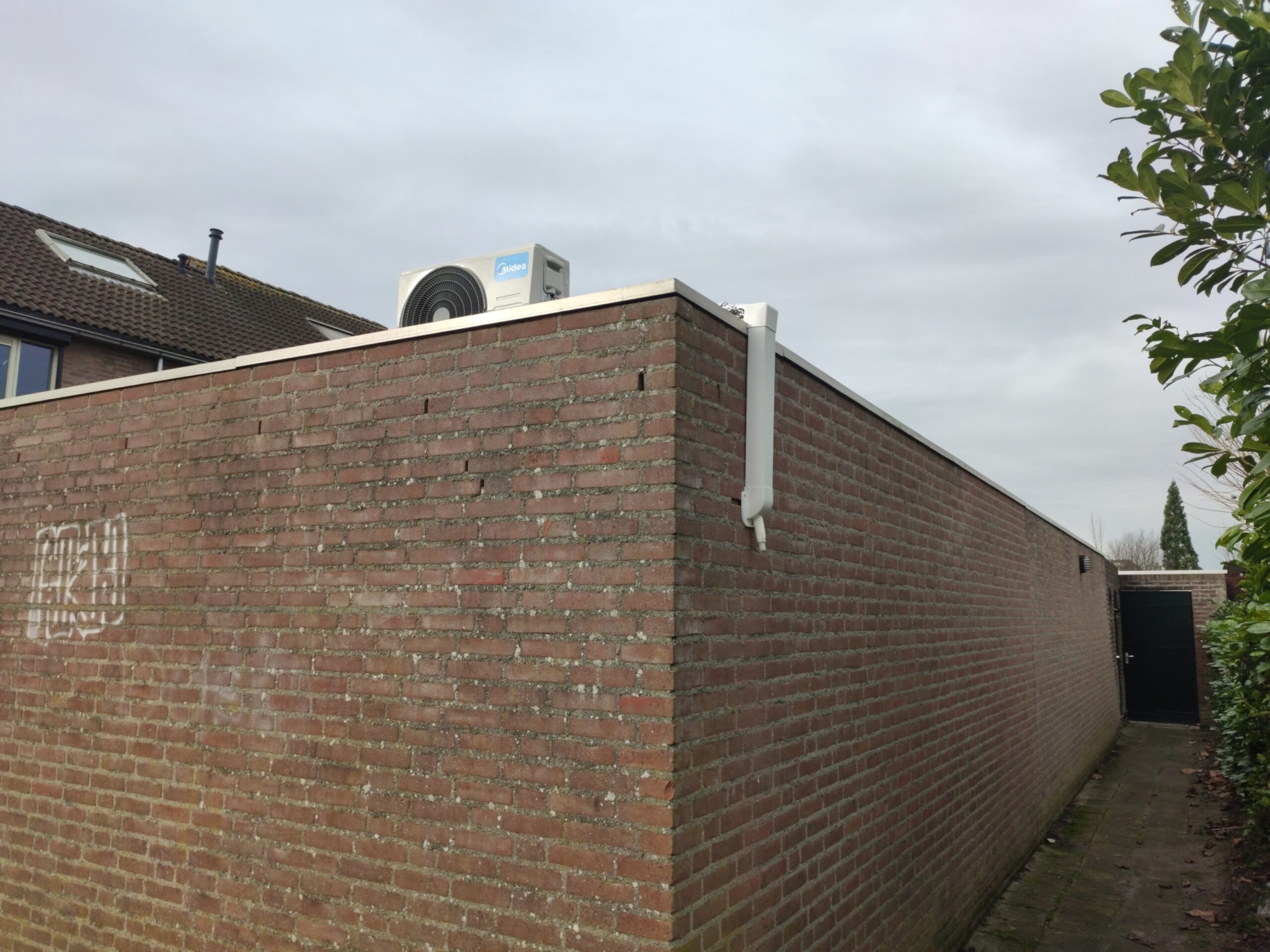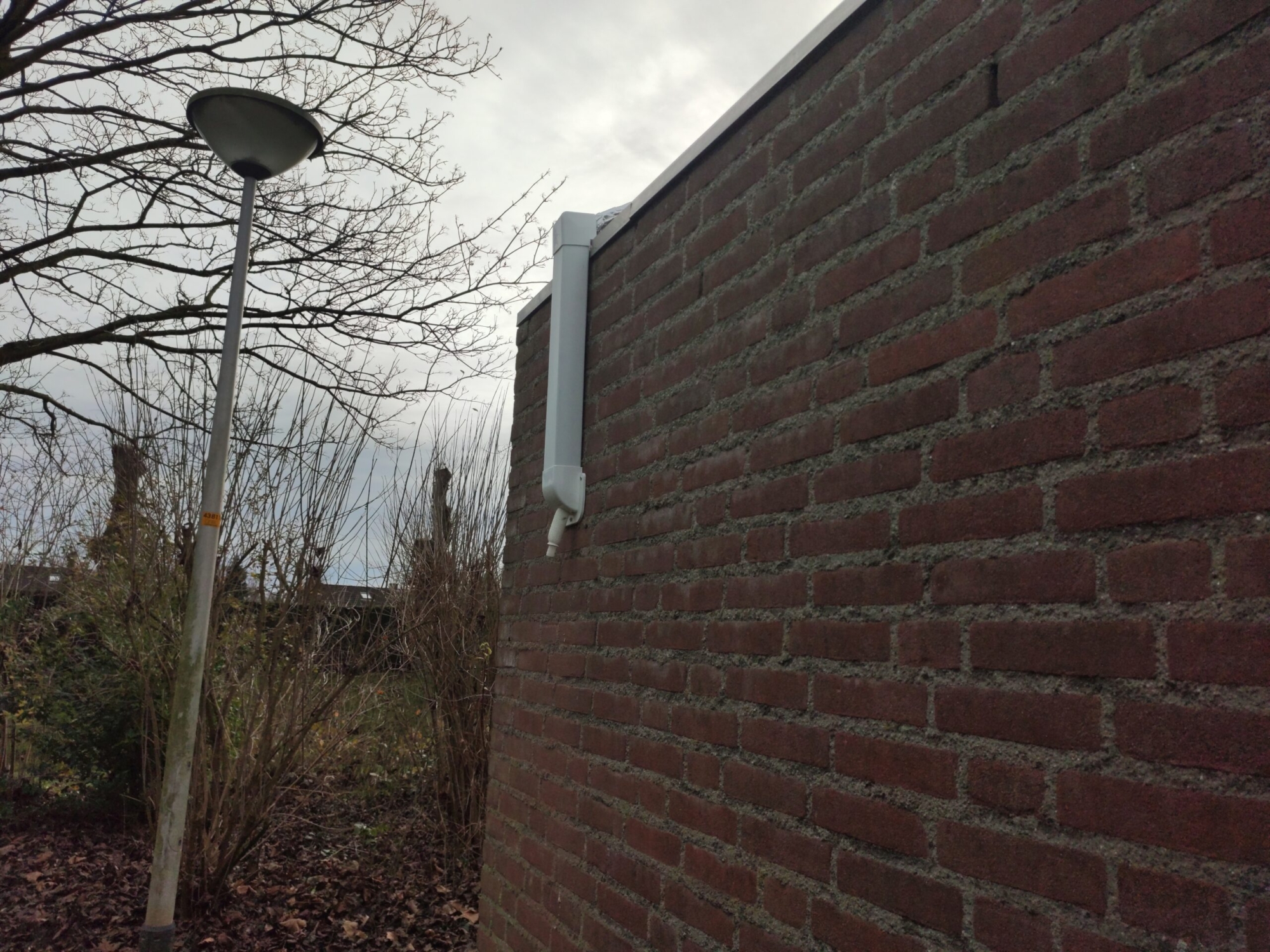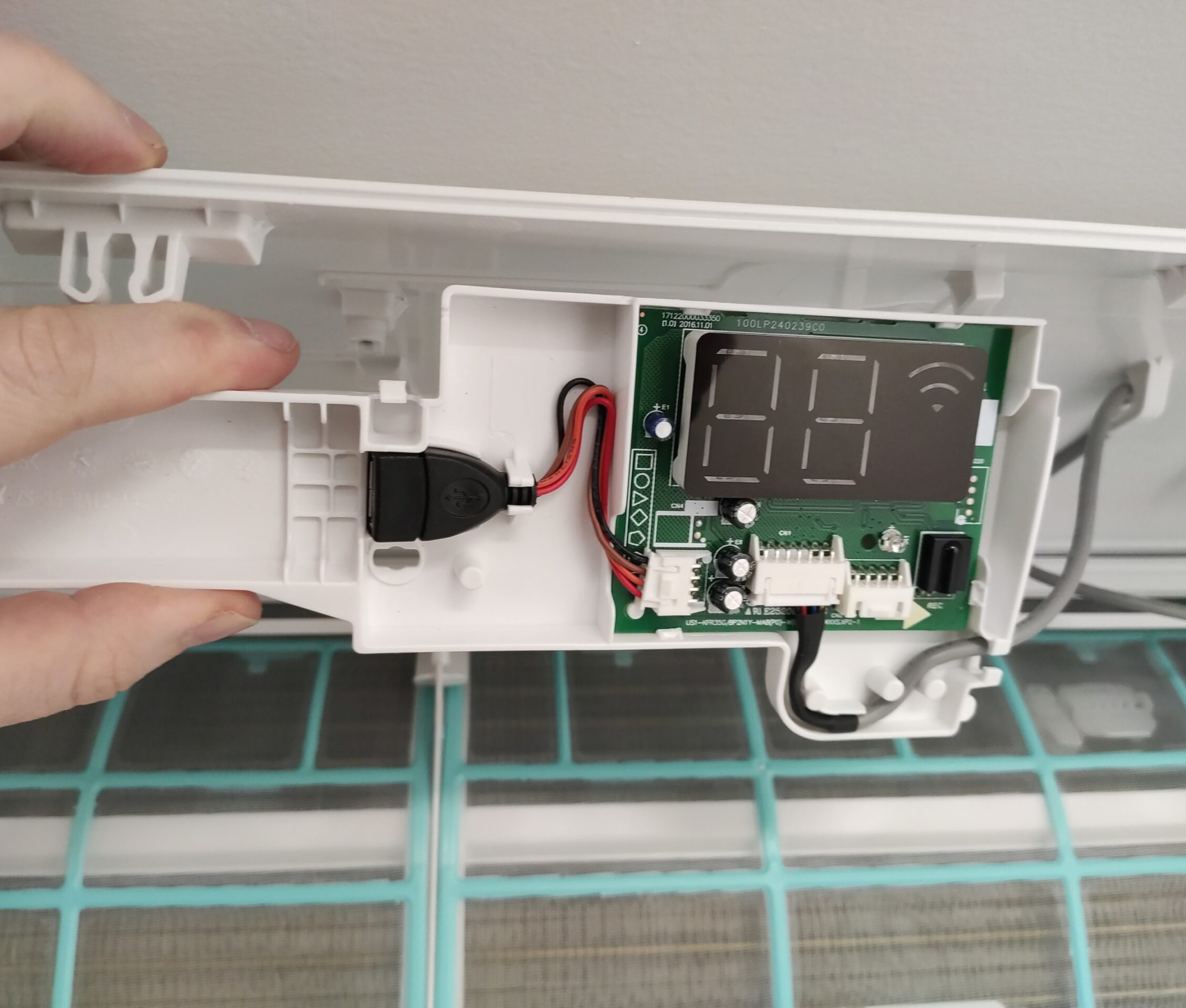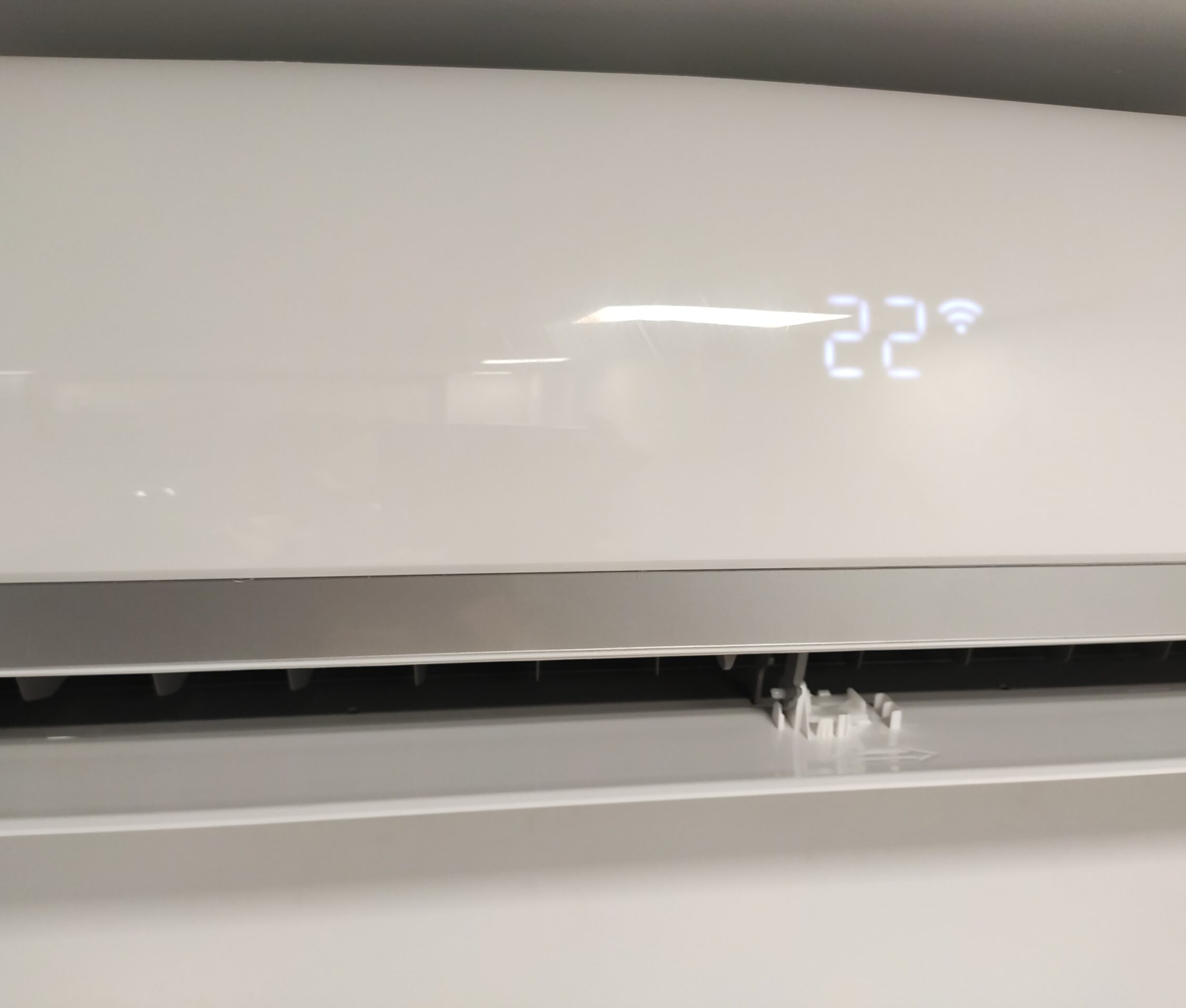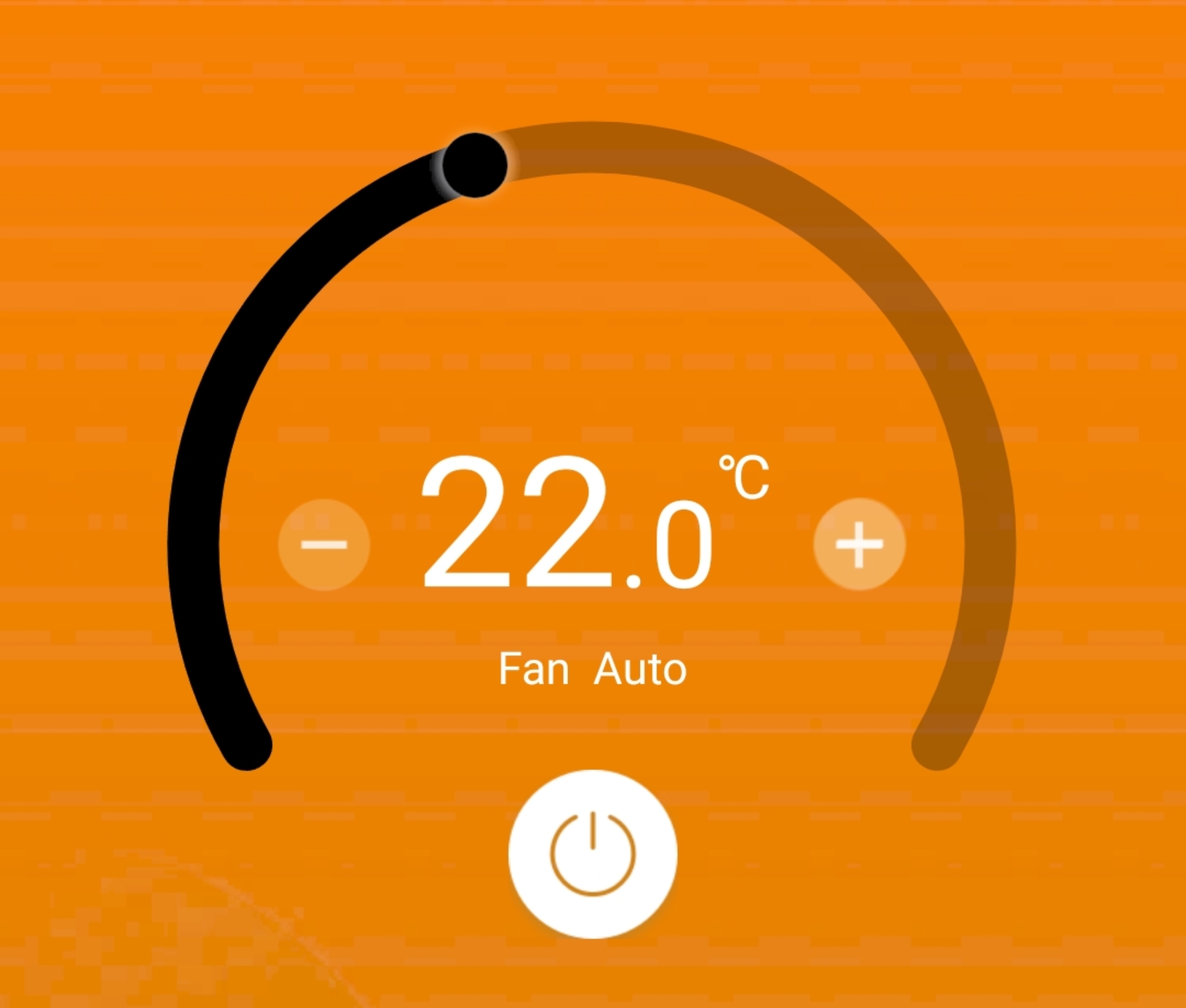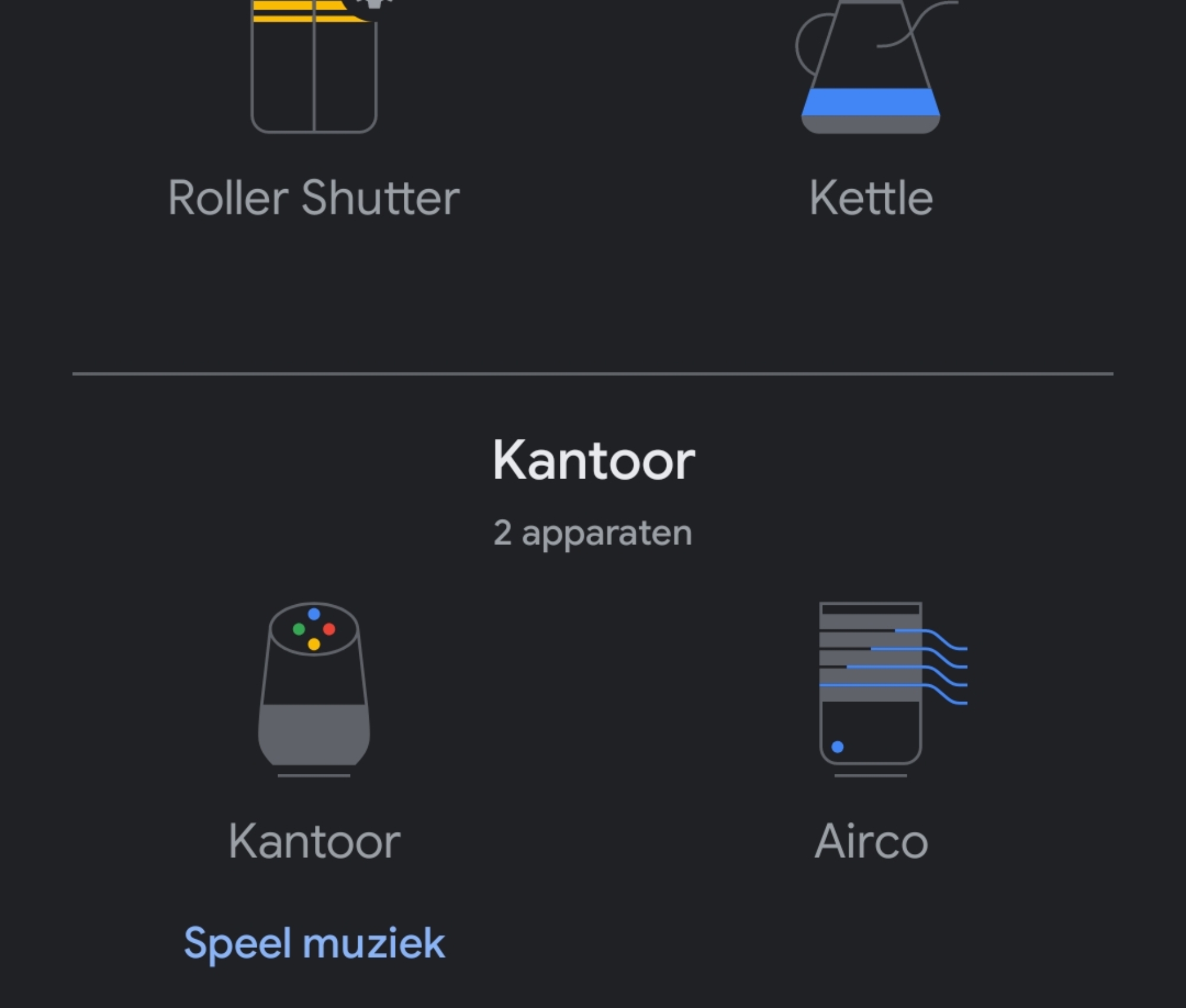A disadvantage of the garage is that it has a flat bitumen roof. This means that the garage can get very hot in the summer, despite all the insulation. In order to be comfortable with it, Gijs decided to install an air conditioning. An additional advantage is that many air conditioners nowadays are also able to heat, and achieve a very high efficiency. By installing such an air conditioner, Gijs is also warm in the winter.
Air conditioners are a luxury product in the Netherlands, and therefore expensive. In southern Europe, however, every house has air conditioning, it is considered standard there and is therefore less pricey. This is why Gijs decided to import an air conditioner. As you might guess, the shipping costs of an air conditioner are on the high side. Gijs had to pay 200 euros for this because the air conditioning would be shipped per pallet. Because a maximum of four air conditioners fit on a pallet, Gijs decided to order four and thus split the shipping costs. He resells the other three air conditioners.
Installing an air conditioner is actually a breeze (pun intended). The indoor unit is mounted to the wall with a special mechanism. Three pipes and a cable come out of the indoor unit, Gijs routes them through a hole of about 6 centimeters behind the indoor unit in his wall. For this he uses a so-called dry drill.
Two of the pipes have to be connected to the outdoor unit of the air conditioner, through which the gas for transporting heat will flow. For most air conditioners, the outdoor unit is pre-filled for a certain pipe length, usually this is 5 meters. As long as the indoor and outdoor unit of the air conditioner remain within this distance from each other, there is no reason to add extra gas and the air conditioner can easily be installed without professional help.
The third pipe is for draining the condensation water in the indoor unit. When an air conditioner cools, condensation forms on the cooling fins. This flows into a receptacle and is transported out through this tube. Because this often happens passively (without a pump), it is important that this tube descends. Otherwise, the air conditioner’s indoor unit will fill up and start to leak, which is disastrous for a plaster wall.
Finally, there is the cable to connect the indoor and outdoor unit. The indoor unit is powered by the outdoor unit and the two units must also communicate with each other. That is why there is a five-core cable to connect both units. For the sake of clarity, Gijs pre-labeled the cables.
Because the wall consists of 3 layers (outer wall, cavity wall and plaster wall), the various pipes and cables can get stuck in the spaces between the walls. Gijs tapes all the pipes together so that they can be fed through the hole as a whole. The hole is then filled with polyurethane foam to keep drafts and moisture out of the wall.
After the indoor unit has been installed, it is time to mount the outdoor unit. Because the roof of the garage is flat, Gijs decided to place the outdoor unit here with shock-absorbing legs. The legs, in combination with extra shock absorbers, must dampen the vibrations and thus the noise of the outdoor unit. These shock absorbers will also protect the bitumen roof against vibrations.
Unfortunately, Gijs ordered the wrong size mounting material, but after a slight modification the outdoor unit could be mounted on its feet and placed on the roof. Once on the roof, the pipes for the refrigerant gas can also be connected. It is important that these pipes do not leak, because the air conditioning will not work without refrigerant gas. Gijs tightens the pipes firmly and uses a special paste on the threads of the fittings to seal them airtight.
To minimize the air that can mix with the refrigerant gas and to check the system for leaks, Gijs uses a special vacuum pump and special barometer. Because this is very specific and expensive tool, Gijs decided to rent it. With the vacuum pump, Gijs can suck all the air out of the pipes and indoor unit before opening the taps on the outdoor unit. After fifteen minutes to 20 minutes, Gijs is pretty sure that the pump will not draw more air from the system, so he turns off the tap between the pump and the barometer and turns off the pump. This creates a closed system between the indoor and outdoor unit of the air conditioner. If after about fifteen minutes the pipes are still under vacuum, Gijs is pretty sure that the pipes have no leakage. Now Gijs can open the taps on the outdoor unit one by one to let the gas flow through the pipes. Only when both the taps are open Gijs disconnects the barometer. Because the pipes are under pressure, a very small amount of gas will escape, but no air will enter the system.
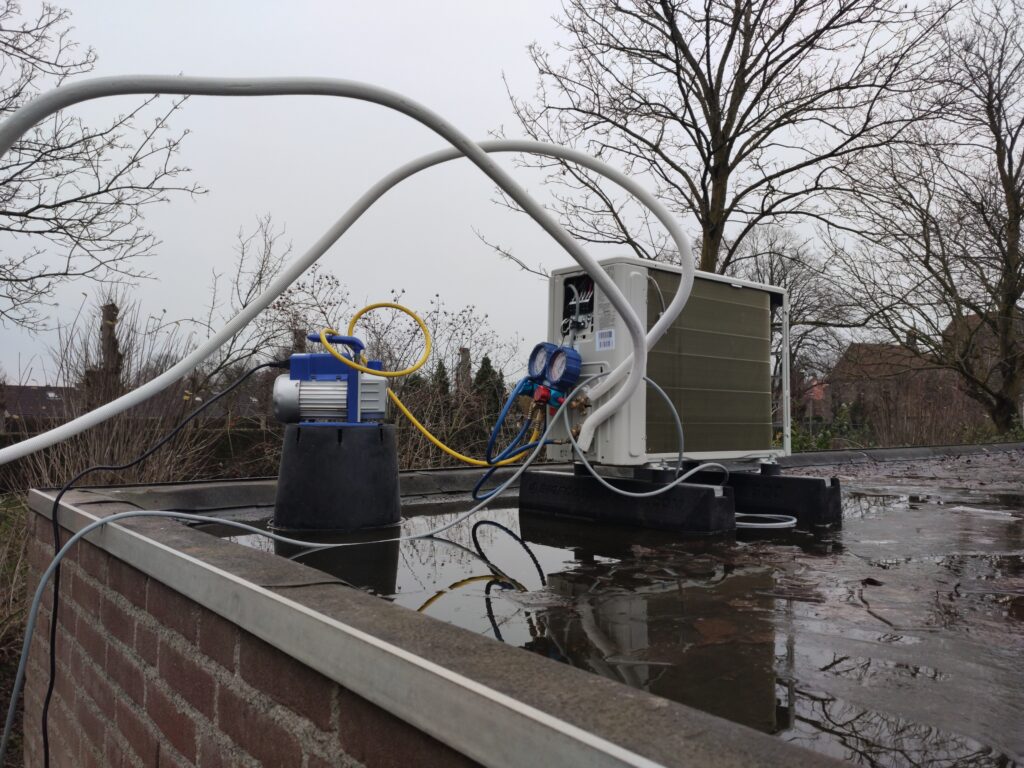
Because vacuuming and checking the system takes some time, Gijs has also connected the Electra of the air conditioning in the meantime. The five-core cable between the indoor and outdoor unit and the power supply to the outdoor unit. After everything is connected, it is time to test the air conditioning. Fortunately, everything seems to work in one go, so it is time to finish the pipes neatly. As extra protection against external influences, Gijs decided to wrap the pipes in an extra layer of insulating tape. He will also install a cable duct along the outer wall to hide the pipes from view. The end result is a neatly installed air conditioner to keep the office and workshop at a comfortable temperature all year round.
Because Gijs is a fan of smart gadgets, he is expanding his air conditioning with a WiFi module. A USB connection is hidden under the cover of the indoor unit. By connecting a special WiFi module to this, the air conditioning can be operated with an app via the internet. In addition to the standard app, the manufacturer also offers the option of operating the air conditioning with google home. In this way, Gijs can set the temperature of his office remotely, so that the office is already at the right temperature when Gijs enters. Also, with the help of google home, the temperature can be automatically adjusted when Gijs leaves his house. This makes it easy to save on energy.

